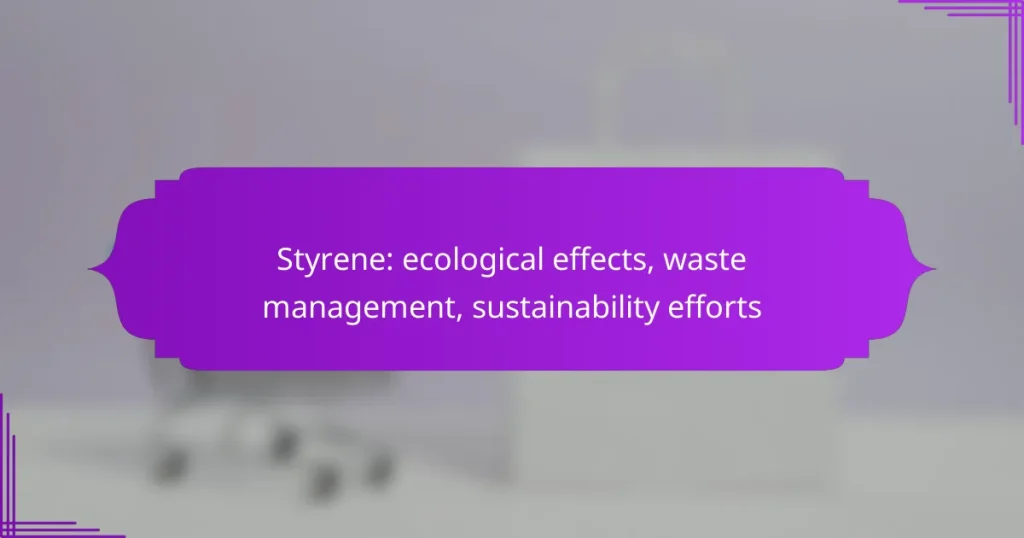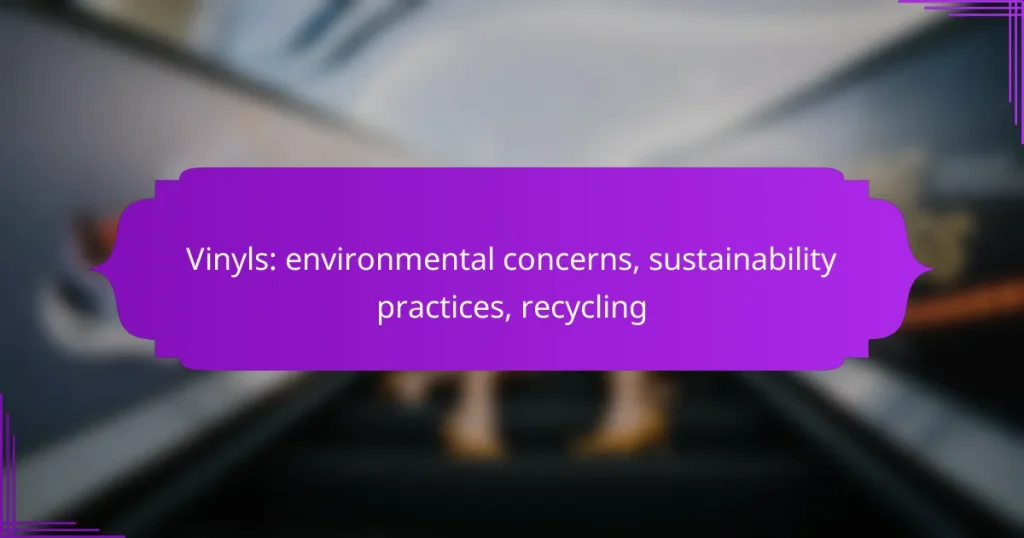The environmental impact of petrochemical products is a pressing concern, particularly in New Zealand, where they contribute to air pollution, water contamination, and soil degradation. These adverse effects stem from various stages of petrochemical life cycles, including extraction, production, and disposal. Addressing these challenges requires the implementation of sustainable practices and effective regulations to safeguard ecosystems and public health.
Polyethylene: recycling challenges, environmental footprint, waste management
Styrene: ecological effects, waste management, sustainability efforts
Polycarbonate: eco-friendliness, recycling options, environmental impact
Xylene: ecological footprint, waste reduction, environmental policies
Vinyls: environmental concerns, sustainability practices, recycling
Polypropylene: biodegradability, recycling potential, environmental concerns
What are the environmental impacts of petrochemical products in New Zealand?
Petrochemical products significantly affect the environment in New Zealand, primarily through air pollution, water contamination, and soil degradation. These impacts arise from the extraction, production, and disposal processes associated with petrochemicals.
Air pollution from petrochemical emissions
Air pollution from petrochemical emissions is a major concern in New Zealand, contributing to poor air quality and health issues. Emissions from refineries and manufacturing facilities release volatile organic compounds (VOCs), nitrogen oxides, and particulate matter into the atmosphere.
These pollutants can lead to respiratory problems and exacerbate conditions like asthma. Monitoring air quality and adhering to regulations, such as the National Environmental Standards for Air Quality, are essential for mitigating these effects.
Water contamination from runoff
Water contamination from petrochemical runoff poses a significant threat to New Zealand’s waterways. When rainwater washes over industrial sites, it can carry harmful chemicals into rivers and lakes, affecting aquatic ecosystems and drinking water sources.
Preventive measures, such as implementing proper drainage systems and using containment strategies, can help reduce runoff. Regular testing of water quality is crucial to ensure safety and compliance with environmental standards.
Soil degradation due to petrochemical waste
Soil degradation from petrochemical waste leads to reduced soil fertility and biodiversity in New Zealand. Improper disposal of petrochemical products can result in soil contamination, which affects plant growth and can enter the food chain.
To combat soil degradation, industries should adopt sustainable waste management practices, including recycling and safe disposal methods. Land remediation efforts may also be necessary to restore contaminated sites.
How can we mitigate the environmental impact of petrochemical products?
Mitigating the environmental impact of petrochemical products involves adopting sustainable practices, implementing regulations, and enhancing recycling efforts. These strategies can significantly reduce pollution and promote a healthier ecosystem.
Adopting biodegradable alternatives
Biodegradable alternatives to petrochemical products can greatly reduce environmental harm. Materials such as polylactic acid (PLA) and polyhydroxyalkanoates (PHA) break down more easily in natural environments, minimizing long-term waste.
When choosing biodegradable options, consider their compostability and the conditions required for effective degradation. For example, some materials may need industrial composting facilities, while others can decompose in home compost setups.
Implementing stricter regulations
Stricter regulations can help control the production and disposal of petrochemical products, thereby reducing their environmental footprint. Governments can enforce limits on emissions, set standards for product lifecycle, and promote safer alternatives.
Effective regulations often include penalties for non-compliance and incentives for companies that adopt greener practices. Countries in the European Union, for instance, have implemented directives that encourage the use of sustainable materials and waste management practices.
Enhancing recycling programs
Improving recycling programs is essential for reducing the environmental impact of petrochemical products. Efficient recycling can recover valuable materials and reduce the need for new petrochemical production.
Communities should focus on expanding access to recycling facilities and educating the public on proper recycling practices. Implementing deposit return schemes for plastic bottles and containers can also encourage higher recycling rates and reduce litter.
What are the health risks associated with petrochemical products?
Petrochemical products pose several health risks, primarily due to their chemical composition and the potential for exposure. Common health issues include respiratory problems and long-term cancer risks, which can arise from both direct contact and inhalation of fumes.
Respiratory issues from exposure
Exposure to petrochemical products can lead to various respiratory issues, including asthma, bronchitis, and other chronic lung diseases. Inhalation of volatile organic compounds (VOCs) found in these products can irritate the airways and exacerbate existing conditions.
Individuals working in industries that utilize petrochemicals should follow safety protocols, such as wearing protective gear and ensuring proper ventilation. Regular health check-ups can help monitor lung function and detect any early signs of respiratory distress.
Long-term cancer risks
Long-term exposure to certain petrochemical products has been linked to an increased risk of various cancers, including lung, bladder, and skin cancers. Carcinogenic substances found in these products can accumulate in the body over time, heightening the risk of developing serious health conditions.
To mitigate these risks, it is crucial to limit exposure by using proper safety equipment, adhering to workplace safety regulations, and being aware of the potential hazards associated with specific petrochemical substances. Regular screenings and awareness of symptoms can aid in early detection and treatment.
Which industries are most affected by petrochemical pollution?
Petrochemical pollution significantly impacts various industries, particularly those reliant on natural resources. Farming and agriculture, as well as fishing and aquaculture, face substantial challenges due to contamination from petrochemical products.
Farming and agriculture
Farming and agriculture are heavily affected by petrochemical pollution, primarily through soil and water contamination. Chemicals from petrochemical products can leach into the soil, reducing soil fertility and harming crops. Farmers may experience decreased yields and increased costs due to the need for remediation.
Additionally, the use of fertilizers and pesticides derived from petrochemicals can lead to runoff, which further contaminates nearby water sources. This not only affects crop health but can also harm livestock and disrupt local ecosystems.
Fishing and aquaculture
Fishing and aquaculture industries are vulnerable to petrochemical pollution, which can degrade water quality and harm aquatic life. Contaminants from petrochemical spills or runoff can lead to fish kills and the bioaccumulation of harmful substances in fish, posing risks to human health.
Fishermen may face reduced catches and economic losses due to polluted waters. Aquaculture operations must implement strict monitoring and management practices to mitigate the effects of petrochemical contamination, ensuring the safety and quality of their products.
What regulations exist for petrochemical products in New Zealand?
In New Zealand, regulations for petrochemical products focus on environmental protection and public safety. Key legislation includes the Resource Management Act 1991 and the Hazardous Substances and New Organisms Act, which govern the management and use of these products.
Resource Management Act 1991
The Resource Management Act 1991 (RMA) is central to managing the environmental impacts of petrochemical products in New Zealand. It aims to promote sustainable management of natural and physical resources, ensuring that any adverse effects on the environment are avoided, remedied, or mitigated.
Under the RMA, local councils are responsible for creating regional and district plans that outline how land and resources can be used. These plans often include provisions for the storage, transportation, and disposal of petrochemical products, requiring companies to comply with specific environmental standards.
Hazardous Substances and New Organisms Act
The Hazardous Substances and New Organisms Act (HSNO) regulates the use of hazardous substances, including many petrochemical products. This legislation ensures that any risks associated with these substances are assessed and managed effectively to protect human health and the environment.
Under HSNO, businesses must obtain approval before importing or manufacturing hazardous substances. This process includes thorough risk assessments and may require compliance with strict safety standards. Companies should familiarize themselves with the classification of their products and the necessary controls to ensure compliance with the Act.
How do petrochemical products contribute to climate change?
Petrochemical products significantly contribute to climate change primarily through greenhouse gas emissions and the reliance on fossil fuels. These emissions arise from the extraction, production, and combustion of petrochemicals, which release carbon dioxide and other harmful gases into the atmosphere.
Greenhouse gas emissions
Greenhouse gas emissions from petrochemical products are a major driver of global warming. The production process for these products often involves burning fossil fuels, which releases large quantities of carbon dioxide. Additionally, the use of petrochemicals in various applications, such as plastics and fertilizers, can lead to further emissions during their lifecycle.
For instance, the manufacturing of plastics can emit significant amounts of methane, a potent greenhouse gas. Reducing the use of petrochemical products or switching to more sustainable alternatives can help mitigate these emissions.
Fossil fuel dependency
The petrochemical industry is heavily dependent on fossil fuels, which are finite resources that contribute to environmental degradation. This dependency not only perpetuates climate change but also poses risks related to energy security and price volatility. As fossil fuel reserves diminish, reliance on these resources becomes increasingly unsustainable.
Transitioning to renewable energy sources, such as solar or wind, can reduce this dependency. Governments and industries are encouraged to invest in alternative materials and energy-efficient technologies to lessen the impact of petrochemical products on climate change.
What are the economic implications of reducing petrochemical use?
Reducing petrochemical use can lead to significant economic implications, including shifts in job markets and potential cost savings. Transitioning to sustainable alternatives may initially require investment but can foster long-term economic benefits through innovation and efficiency.
Job creation in green industries
The shift away from petrochemicals can stimulate job creation in renewable energy and sustainable product sectors. Industries focused on solar, wind, and bio-based materials are expanding rapidly, often requiring skilled labor for manufacturing, installation, and maintenance.
For instance, the renewable energy sector has seen job growth rates exceeding 10% annually in many regions, reflecting a strong demand for workers in these fields. Training programs and educational initiatives can further enhance workforce readiness, ensuring that displaced petrochemical workers can transition into these new roles.
Cost savings from sustainable practices
Implementing sustainable practices can lead to substantial cost savings for businesses. By reducing reliance on petrochemical products, companies can lower their raw material costs and decrease waste management expenses associated with hazardous materials.
For example, businesses that adopt circular economy principles often find that reusing materials and minimizing waste can cut operational costs by 20% or more. Additionally, energy-efficient technologies can reduce utility bills, providing further financial relief.
What are the emerging trends in petrochemical alternatives?
Emerging trends in petrochemical alternatives focus on sustainable materials and innovative technologies that reduce environmental impact. These alternatives aim to replace traditional petrochemicals with bio-based, recyclable, or biodegradable options, reflecting a growing commitment to sustainability.
Bioplastics
Bioplastics are made from renewable biomass sources such as corn starch or sugarcane, offering a more sustainable option compared to conventional plastics derived from fossil fuels. They can be designed to be biodegradable or compostable, which helps reduce plastic waste in landfills and oceans.
While bioplastics can significantly lower carbon footprints, they may require specific conditions for degradation and can sometimes compete with food production. It’s essential to evaluate the entire lifecycle of bioplastics, including sourcing and disposal methods.
Recycled Materials
The use of recycled materials is gaining traction as a viable alternative to new petrochemical products. By reprocessing plastics and other materials, companies can reduce reliance on virgin resources and minimize waste. This trend is supported by increasing regulations encouraging recycling and circular economy practices.
Recycling not only conserves energy but also reduces greenhouse gas emissions. However, the quality of recycled materials can vary, which may affect their application in high-performance products. Understanding the specifications and limitations of recycled materials is crucial for effective implementation.
Green Chemistry
Green chemistry emphasizes the design of chemical processes and products that minimize hazardous substances and environmental impact. This approach encourages the development of safer, more efficient chemical reactions that can replace traditional petrochemical processes.
Adopting green chemistry principles can lead to significant cost savings and improved safety profiles for manufacturers. However, transitioning to green chemistry may require investment in new technologies and training for staff to ensure compliance with evolving standards.






